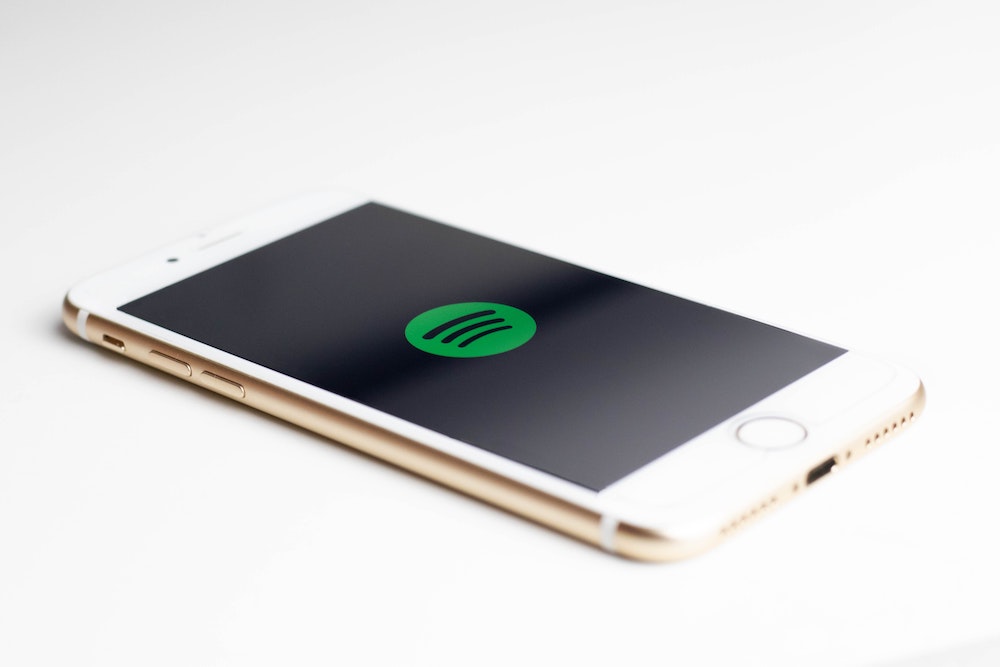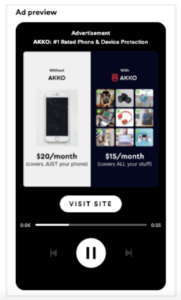Spotify Ads: How Our Clients Are Using This (And You Can Too!)
Testing new ad platforms to diversify the channel mix for your business is never a bad idea. The age-old adage of ‘don’t put all of your eggs in one basket’ is certainly true for growth marketing.
The truth is, there are frequent changes to ad platforms, such as Facebook’s iOS 14 update in 2021, that can throw a wrench into a business’s advertising plans and have an impact on its revenue and growth. If you haven’t been spending your time diversifying your channel mix, or at the very least testing new ad platforms, chances are a major update to your primary advertising channel would have a negative impact on your business.
At Tuff, we’re constantly looking for new channels to test for our partners, especially when the ad platform has specific features that could provide synergical benefits with the brand itself. One of these ad platforms we’ve been testing is Spotify Ads.
Why Spotify Ads? Well, Spotify is by far the world’s most popular audio streaming service, holding 31% of the global streaming music subscription market, more than double their largest competitor, Apple Music, who holds just 15%. An opportunity to get a message out on a self-service ad platform with 381 million users? Yes, please!
And we’re hardly the only ones – in fact, Spotify’s ad revenues increased 75% YoY in Q3 of 2021. Startups and businesses everywhere are leaning into Spotify Ads as a new channel to reach an engaged and targeted audience.
Let’s take a look at a few ways you can do this too!
Compelling Targeting Options
As a growth marketer, is there anything better than a self-service ad platform? I mean, being able to set up an account and hit the ground running with ads is a thing of beauty. Spotify makes this easy, but it also makes targeting your ideal audience easy. In fact, Spotify has some downright cool targeting options that stand out, in addition to the classic demographic options like location, age, and gender.
Some of the more interesting targeting options are on the Podcasts side of the house. It’s no secret Spotify is home to some of the most popular podcasts in the world, and getting the chance to advertise on them is huge. But what really stands out is the ability to prevent your ads from playing next to similar ads, also known as ‘Competitive Separation’, as well as the ability to exclude topics that don’t align with your brand, or even targeting relevant episode topics, known as ‘Content Controls.’
For example, an online education platform targeting adult learners may wish to ensure that they’re ads are not playing next to a competitor with similar offerings:
So, with Spotify Ads, you can not only target your ideal audience by demographic, but you can also narrow in on the the topics that most closely match your brand and offering, while ensuring that you’re not being played alongside your competitor. Pretty cool, right?
On the Music side of things, Spotify provides the ability to target audiences based on interests, real-time context (as indicated by the playlist they’re currently listening to), or genre.
Audio or Video Ad Types
Another surprising attribute of Spotify Ads is the actual quality of the ads themselves, and the various ad types that are available.
When targeting Music placements, brands can leverage Audio ads, as well as Video ads (either horizontal or vertical). For Podcast placements, ads are limited to Audio ads. But, even still, the Audio ads look and sound great. When running a Spotify Ads test for Tuff partner and device insurance provider, AKKO, we tested both Audio & Video ads. An example of how an Audio ad looks on a mobile device is below:
Don’t have a professional voiceover artist to make a high quality Audio ad? Don’t worry – we didn’t either! Instead, we wrote a script (up to 90 words) and submitted it to Spotify to be read by a professional voice actor, and we were even able to select from a library of royalty-free music to use as a backing track. When the ad was returned within 48 hours, it was surprisingly and refreshingly professional. The cost for this audio creation? Nothing.
Performance & Cost
You’ve made it this far and are convinced that Spotify Ads are at least worth a try. But how much do Spotify Ads cost? And, are there any downsides?
So far in this blog, I’ve had all good things to say about Spotify Ads. But I promise, this isn’t a sales pitch, and there are some cons that we’ve experienced in our campaign testing. Primarily, during our testing we learned that Spotify Ads are probably best used by businesses with a large ad budget – think 5 figures plus.
Why? Because even though we’ve spent thousands of dollars on campaigns testing Spotify Ads, both Audio & Video ad types, we haven’t seen frequency get over 1.1, even when we geo-target, which means that the vast majority of users hearing the ads only heard them once per campaign. To increase this frequency and therefore your ads’ stickiness with the user, you’ll have to spend much more.
Additionally, we’ve experienced higher than average CPCs and CPMs when compared to similar ad platforms such as YouTube, at $5 and $23 respectively across all campaigns tested. But, we’ve also seen stellar play-thru metrics, surpassing what you can expect to find on other platforms like YouTube Ads, with most campaigns averaging an 89% or higher ‘Completion Rate’, ensuring the full message is being heard the vast majority of the time.
In short, our testing has revealed that Spotify Ads are a great way to get your message heard all the way through by a targeted audience, but you can expect to pay a bit more for the privilege, especially if you want the user to hear your ad more than once.
Tracking Your Campaign Performance
Tracking the success of a campaign run on an audio-first platform is tricky, but there are ways that it can be accomplished.
First, setting proper UTM tracking links on all of your ad creative will ensure that you’re tracking the clicks on your ads into Google Analytics. A simple source/medium combination of spotify/cpc works, with additional parameters like utm_campaign and utm_content for your campaign and ad specificity.
You can take this further, and direct this UTM tagged traffic to a specific landing page optimized for Spotify listeners. For our partner AKKO, we developed and directed traffic to getakko.com/spotify and provided a special ‘first month free’ offer to entice sign ups. This offer matched the message delivered in our audio and video ads to tie the journey together for the user.
With UTMs and a dedicated campaign landing page, we were able to ensure that any user that clicked through from our Spotify campaigns would be tracked effectively and efficiently in Google Analytics, siloed away from other traffic efforts.
However, being an audio-first platform means many users that hear ads won’t necessarily engage via a click to the website. In fact, the vast majority of users who your ad won’t click-thru. So how can you track sign ups more effectively? You can leverage the power of ‘Zero-party Data’.
What’s Zero-party data? Forrester Research first defined the term as follows:
“Zero-party data is that which a customer intentionally and proactively shares with a brand. It can include preference center data, purchase intentions, personal context, and how the individual wants the brand to recognize [them].”
For example, you can include a very simple question during your sign up or checkout flow – “How did you hear about us?”
This method is incredibly effective at filling in the gaps that online tracking and attribution so often miss.
Spotify Ads: Great at the Assist
If you’re a business currently spending on channels like Facebook, Google, YouTube, and TikTok and you’re looking to explore a new advertising platform in 2022 to diversify your channel mix, consider Spotify Ads.
With a self-service platform of audio and video ad capabilities, some nifty targeting options, and engaged audiences, Spotify Ads could provide you with a fresh, new channel to expand on your messaging efforts. Spotify ads might not rival what you can do on some of the other more established ad platforms like Google and Facebook, but this channel can play a strong role in increasing your brand’s awareness, favorability, and overall conversions and revenue.

Chris is a PPC Strategist based in Nashville, Tennessee. When he’s not scaling Google Ads & YouTube campaigns, he enjoys longboarding, tinkering with automation tools, and a little bit of gaming.







